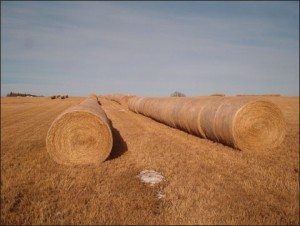By Molly Rovero, LuxEco Living Editorial Assistant
After the deluge of oil began glutting 504,000 to 798,000 (12,000 to 19,000 barrels) gallons per day into the Gulf of Mexico on April 20, problem-solvers and inventors from around the country began to summon the great American spirit of innovation and ingenuity to find their own solutions for safely and efficiently dealing with this environmental disaster.
Aside from the oil that is gushing into the water British Petroleum is dumping chemicals into the gulf as dispersants, which break up the oil and spread the molecules out. Information about the toxicity of such chemicals is not readily available to the public because the information is protected by law, under proprietary stipulations. This allows companies to keep their trade secrets and information out of the public eye. People are not being told the truth about what is being released into the environment. The idea is that surface creatures, such as birds, will not be affected because oil will no longer be in concentrated areas. Though the chemicals are said to be less toxic than the oil, it is impossible to tell what the future effects will be. The Environmental Protection Agency has even stated that it is too early to tell what “the scope of the natural resource damage will be.”
Two Florida men working for contracting company C.W. Roberts, Darryl Carpenter and Otis Goodman, have created an alternative that is not only non-toxic but presumably eco-friendly. Their concept is to use hay to absorb the oil, a potentially more effective solution than just dispersing oil molecules over a greater area. These men are concerned about the devastating and far-reaching effects of the oil spill on the marine life and ecosystem of the Florida coast and how it may be damaged for generations to come. Many of their co-workers fish on the weekends and would be greatly affected by oil off the coast of Florida, which would deplete fish populations or make them unsafe for consumption. Environmental impacts are not the only concern people have about the oil spill. The fishing industry has been greatly affected already, and tourism will decrease causing economic downfall in at-risk areas.
Carpenter and Goodman demonstrated their idea to the U.S. Coast Guard and Florida’s Department of Environmental Protection. While the EPA is not able to get involved until the spill is within 9 miles of the coast, the Coast Guard can. Their ambition is to collaborate with BP and begin their hay-based clean up, as hurricane season begins ramping up, which could cause greater problems and devastate the clean up effort.
Without a precedent for studying the effects of hurricanes through oil slicks , uncertainty looms as the hurricane season approaches leaving scientists unsure about the effects of a hurricane in the gulf. The National Oceanic and Atmospheric Administration has predicted that this hurricane season will likely be above average with a chance of at least 3 and possibly 7 major storms. Beyond fueling a more turbulent and violent storm season, the damage to the ocean’s delicate ecosystem will arrive to the shoreline and cause dramatic damage to coastal wildlife and residential and commercial property.
Carpenter and Goodman have demonstrated their safe and effective method of using hay to absorb oil in water. Watch them discuss how their concept works, ways in which it can be used in the clean up, and what can be done with the hay after it is collected.
“It’s worth a try” is the attitude surrounding this idea as it has not yet been tested on a large scale. These men are reaching out to BP and the Coast Guard for an opportunity to test the use of hay on a small scale. There has been no response however, due to the necessity for stopping the spill and the lack of focus on its clean up.














